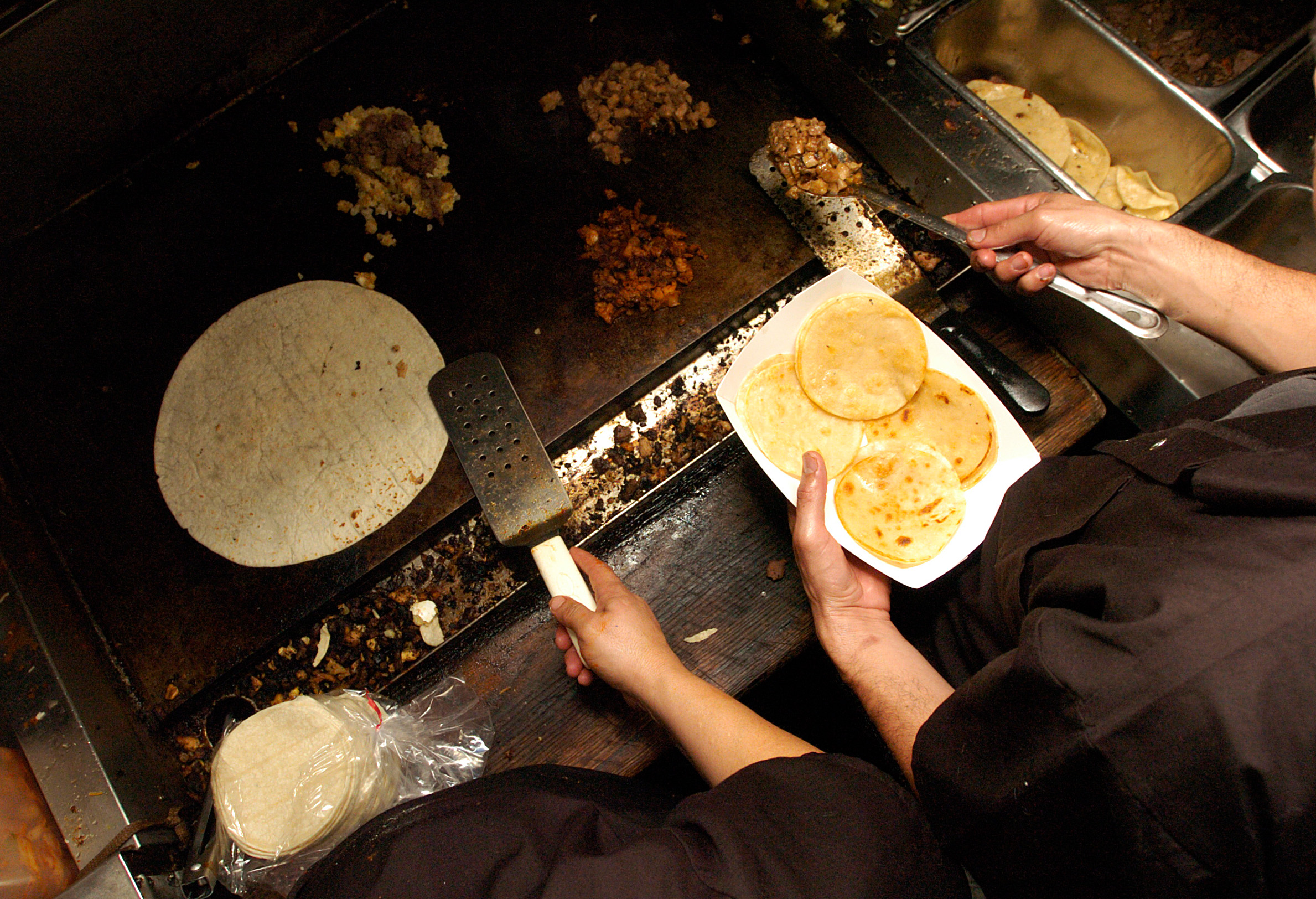Every day in the Court of Sciences, food trucks rotate in and out serving food to hungry students, staff and faculty in South Campus. Often, the menus of these trucks seem like a collision course in cultural cuisine: Vietnamese and French, Korean and Mexican, and everything in between.
The hungry people of Los Angeles are not so different from their Bruin counterparts: Taco trucks dishing up Korean-Mexican fusion inspire countless Angelenos to line up flash-mob style as soon as the trucks Tweet their locations.
The thing is, fusion food isn’t just popular. It’s good.
One night, a Kogi BBQ truck, the progenitor of it all, parks outside the Mattel Children’s Hospital at UCLA. It’s 7 p.m., dark and cold, but a long line of taco-hungry students and locals snakes down the sidewalk. Small groups chat together as they wait to reach the counter, the tone of their voices suggesting a conspiracy. It’s like going to an underground club more than a taco truck. It’s cool.
But even more importantly, what does it taste like?
“It’s delicious,” said Austin Bagingito, a third-year physiological science student and voracious eater. A fan of the Korean-Mexican combination, he has eaten at both Kogi and competitor Calbi Korean BBQ.
“I love Mexican food and I love Asian food, so of course I like them together,” he said. “You get the basics of Mexican food with the tortilla and the cilantro, but it’s open for other things like the Asian flavor and spices and meat.”
The staples of the cuisine are the tacos and burritos, both robust plates stuffed with heavily seasoned meat typical of a Korean BBQ restaurant rather than a corn tortilla. You can get the kimchi flavor added, or the spicy pork, or even tofu. It’s one culture wrapped in another.
“Mexican-Korean flavors coming together is only a natural progression,” said Alice Shin, Kogi’s spokeswoman. “For generations, Chicanos and Koreans have lived side-by-side in K-town, ate one another’s food, enjoyed one another’s company. This is what Los Angeles tastes like.”
It doesn’t take an astute eye to see what she means. Los Angeles is the melting pot of the world.
Being pressed up against Mexico and just an ocean away from Korea, fusion food isn’t the first example of cross-cultural mixing here.
“It’s L.A., it’s California, its the U.S., so everyone is so used to mixing different foods and flavors,” said Giselle Pineda, founder of LA FuXion, a K-Mex truck that has been making stops in South Campus during Bombshelter’s renovations.
Pineda, who is Mexican American, but grew up in Koreatown, started up LA FuXion just over nine months ago with Mindy Song, who is Korean American.
“Food is my passion,” Song said. “So now we’re just trying to perfect the flavors and create new flavors that people will like.”
What types of funky flavors is she talking about? Her personal favorites are the crab, shrimp and tuna sashimi tostadas.
The promise of such food is drawing huge crowds. At Kogi’s UCLA stop, university students were lined up with people well into adulthood and even some younger kids. Kody Greenbalm and Jaxson Foster, high school students at Harvard-Westlake School, got in line twice among the UCLA pack.
“It’s the bomb,” Greenbalm said, “It’s the sauce, it’s sweet and spicy; it’s unlike anything I’ve ever had before.”
According to Pineda, while people in their 20s get the most coverage as the K-Mex truck fanbase, people younger and older are just as into it.
“There’s no age limit. All ages love it,” she said. “People are so used to mixed flavors now that this has got to stay.”
Kogi’s Shin insists that there is nothing trendy about it. To her, trendiness is about capitalizing on a fleeting hot item, and that’s not how she sees her business.
“We’ve put everything on the line in the interests of bringing really great food from excellent sources and price it so that it’s affordable to just about anybody. We want it to be the best thing you’ve ever tasted,” Shin said.
As for the stigma that food fusion is unoriginal ““ it is the novelty of mingling the tastes of two cultures that makes it interesting.
“That’s why we don’t call it fusion,” Shin said. “Because what we did wasn’t unnatural. What we do call it, however, is Angeleno.”
